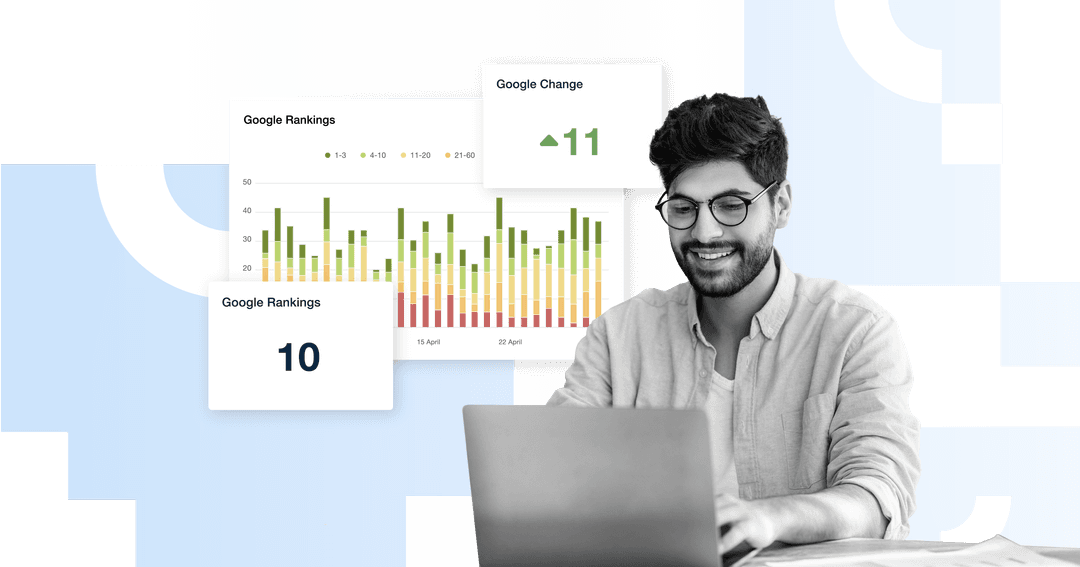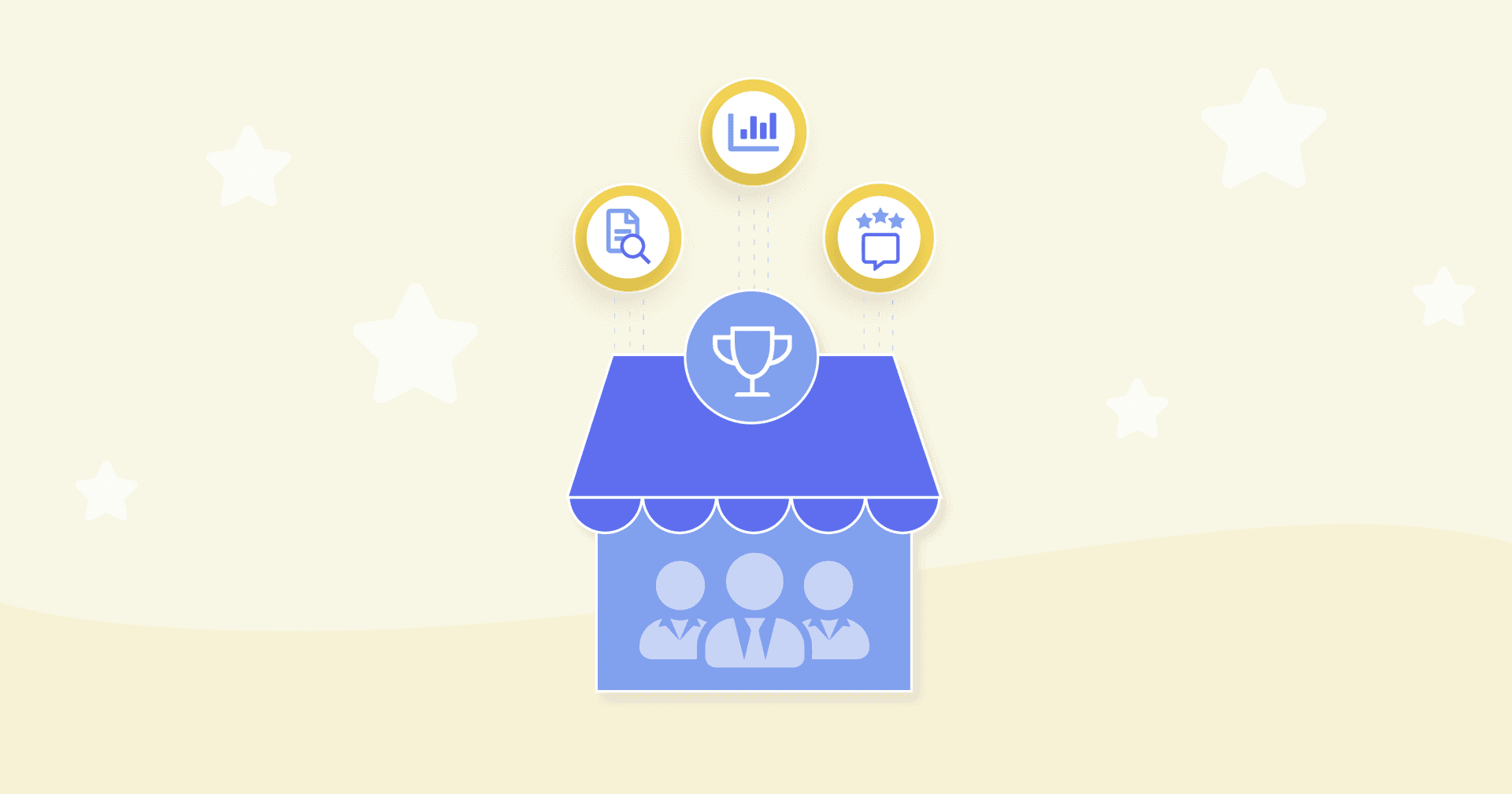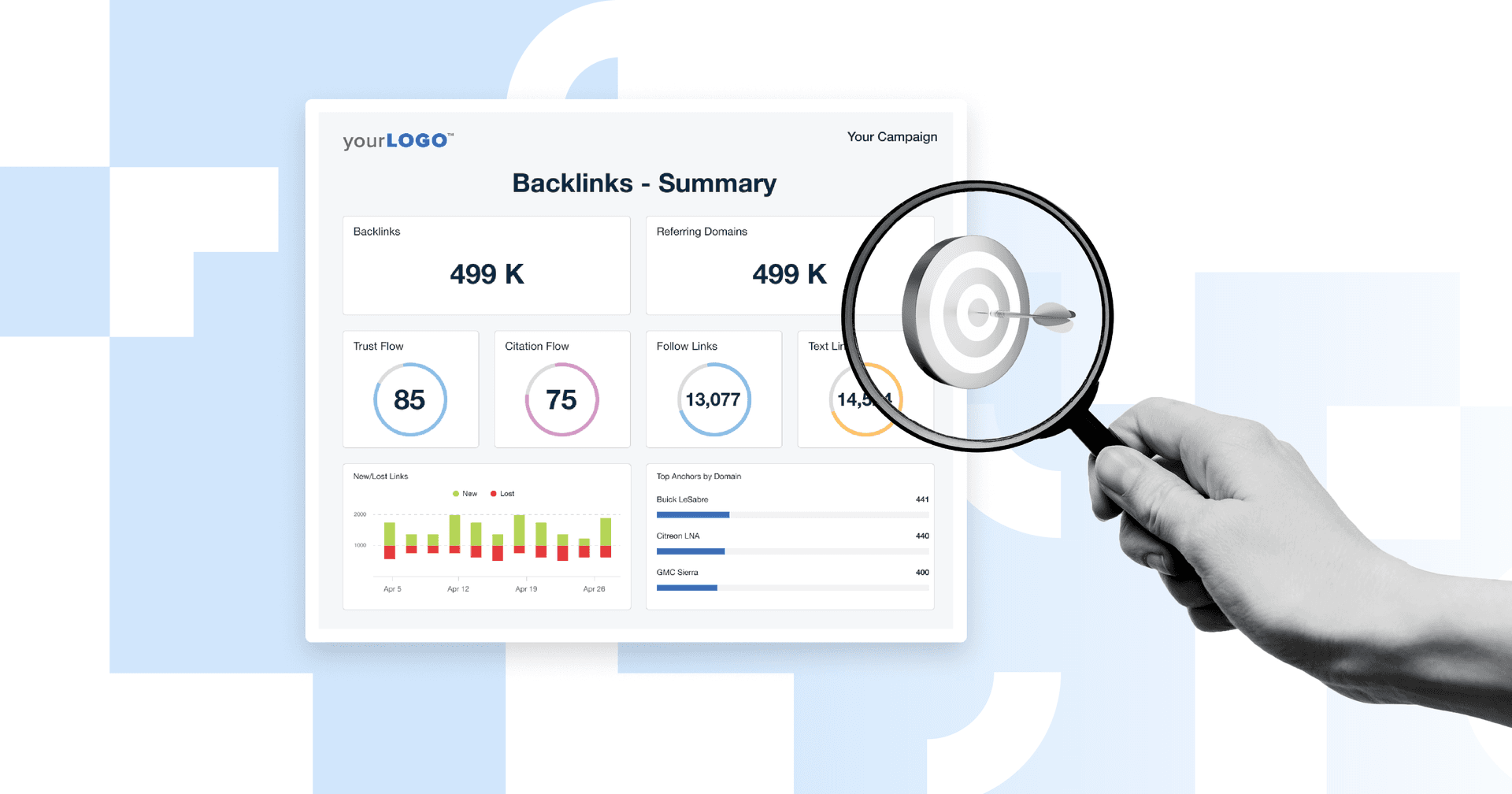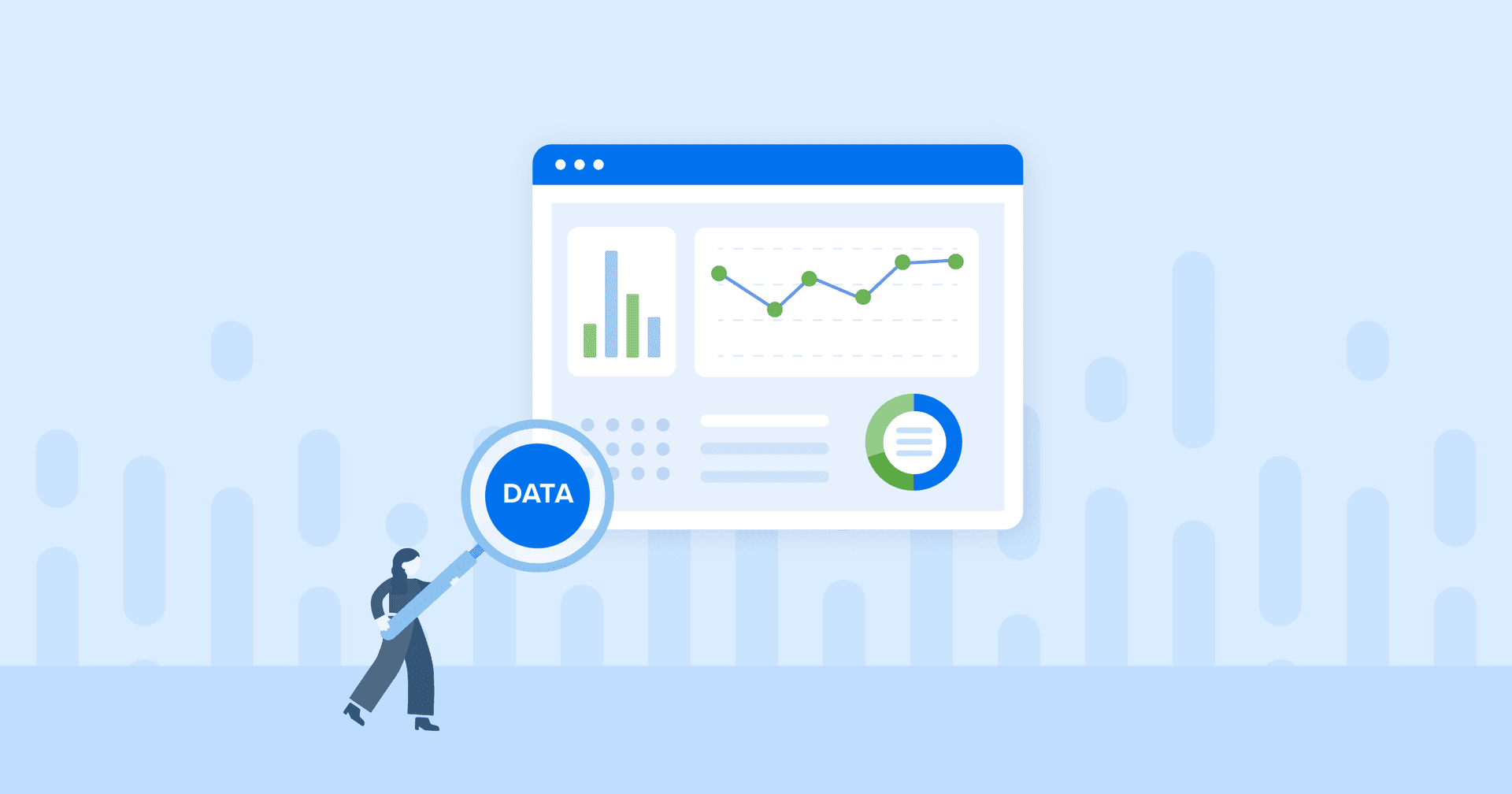Table of Contents
QUICK SUMMARY:
Competitive analysis is the process of evaluating competitors’ strategies, messaging, channels, and performance to identify strengths, weaknesses, and opportunities. It’s an important part of an agency’s marketing strategy, helping with strategic direction, benchmarking results, and identifying gaps. This guide outlines how to use competitive insights to improve campaign performance, sharpen positioning, and drive smarter, data-informed decisions.
In 2025, understanding the wider context within which your clients operate is critical to success. That’s why competitive analysis should be a key component of your strategy.
We’re not talking about simply copying your clients’ competitors. Instead, it’s all about understanding their moves so your agency can make smarter ones.
Successful agencies digging into what others in the industry are doing, why it’s working, and where the gaps are. That’s how they keep their clients ahead, and end up retaining those clients in the long run.
When done right, competitive analysis helps agencies sharpen positioning, uncover untapped opportunities, and show clients exactly how their strategy stacks up in the market. It means less guesswork, more strategic wins, and stronger client trust.
Sound like something you’d like to do?
In this article, we’re sharing everything you need to know to implement a successful competitive analysis strategy at your agency.
What is Competitive Analysis?
To start, let’s cover the basics. Competitive analysis is the process of identifying your competitors and evaluating their strategies, strengths, and weaknesses. For agencies, that means looking beyond surface-level tactics and into the details: What kind of messaging they're using, which channels are performing, how their clients are engaging, and where their results are falling short.
That includes understanding how competitors position their offers, from content and service structure to pricing strategy. These details help shape smarter, more competitive campaigns for your clients.
At its core, competitive analysis is a strategic tool. It helps you understand the broader market so your agency can make data-informed decisions faster!
When you're optimizing a client's SEO strategy or launching a new paid media campaign, knowing what others in the space are doing helps you set smarter goals and avoid wasting a client’s budget chasing what won’t work.
Agencies will use it to answer practical questions like:
Who’s ranking above your clients and why?
What content gaps can you fill that competitors are ignoring?
Are your clients over or underperforming compared to industry benchmarks?
We conduct extensive market research including competitor analysis at the start of a new campaign, to 'find out the why' of our client and decide where they are likely to succeed online, and then from there we identify what metrics will lead directly to that success.
Daniel Noakes, Founder, UClimb
With the right process and tools in place, competitive analysis becomes less about reacting to competitors and more about building a strategy that consistently outperforms them.
Why Competitive Analysis is Critical for Digital Marketing Success
For a quick refresher, we’ve established that competitive analysis gives agencies the context needed to make smarter, faster decisions. It shifts strategy from guesswork to data-backed action.
Don't ever JUST trust your gut about an article that you think will perform well. Do your research about what IS performing well, whether it's a powerful high volume low competition keyword, a long tail question that is begging to be answered, or a blog from a competitor that you could write better; all of these things are available for you to write useful, strong content that informs and empowers your readers, you just need to know where to look.
Rachel Jackson, Lead SEO Specialist, Wit Digital
Consider this scenario. Similar to what Rachel Jackson from Wit Digital has mentioned above, let’s say your client wants to rank for a high-intent keyword. Nothing is moving the needle. You look at competitors and see they’ve invested in long-form content backed by strong domain authority. Now it’s clear. This isn’t a copy issue; it’s a credibility gap. That insight changes the game plan immediately.
Agencies use competitive analysis to:
Set Meaningful Goals
Benchmarking performance against competitors helps align expectations with real-world conditions.
Track a client’s marketing goals within their marketing dashboards to clearly show how your agency is progressing and surpassing them. Try it with your 14-day free trial of AgencyAnalytics.
Win Client Buy-In
When clients see how they measure up, your recommendations carry more weight.
Stay Ahead of the Curve
Tracking shifts in the market helps you respond before a particular digital marketing trend becomes standard practice.
Clients want to see progress in context. Competitive analysis adds that context and gives your agency the edge in both performance and perception.
Agency Tip: Try the Insights feature from AgencyAnalytics to better understand how a client stacks up against competitors in their industry. This platform is pulling marketing data from 7,000 other agency’s client campaigns. All you have to do is select the industry your client is in and the metric you’d like to compare. Get started with your 14-day free trial today!

Key Competitive Analysis Frameworks
Let’s take your competitive analysis and give it some structure. A thorough competitive analysis example will show how structured models lead to faster, smarter decisions.
While not every project needs a formal approach, these core goal setting frameworks keep your analysis grounded in strategy instead of collecting disconnected observations. Have you ever heard of the saying, “Let’s throw it to the wall and hope it sticks?” Let’s avoid that guessing game altogether. Check out these different competitor analysis frameworks below:
SWOT Analysis
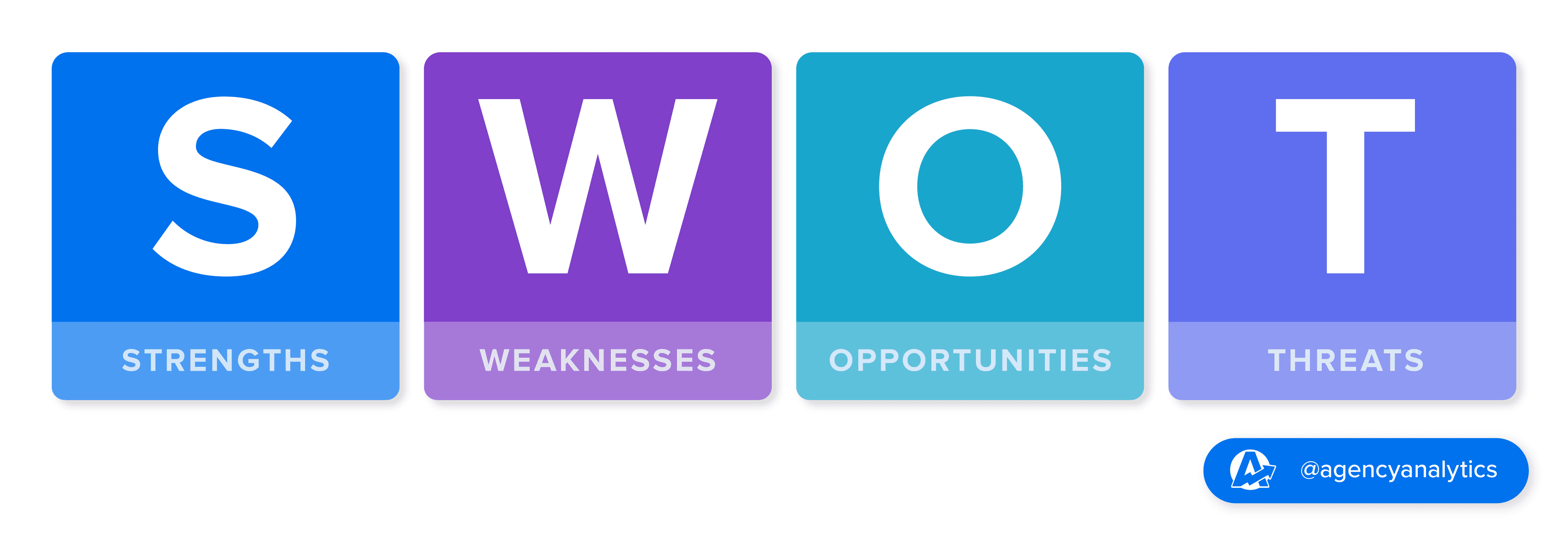
A classic for a reason. SWOT (Strengths, Weaknesses, Opportunities, Threats) helps agencies distill what a competitor is doing well, where they’re falling short, what market openings exist, and what external risks could impact performance.
Example: If a local competitor is killing it with paid social but neglecting SEO, that’s a clear opportunity to position your client with a content-driven marketing strategy. On the flip side, if that same competitor starts scaling content, you’ll know to act fast, thanks to SWOT analysis.
Looking for a free SWOT analysis template? We’ve got you covered!
Porter’s Five Forces
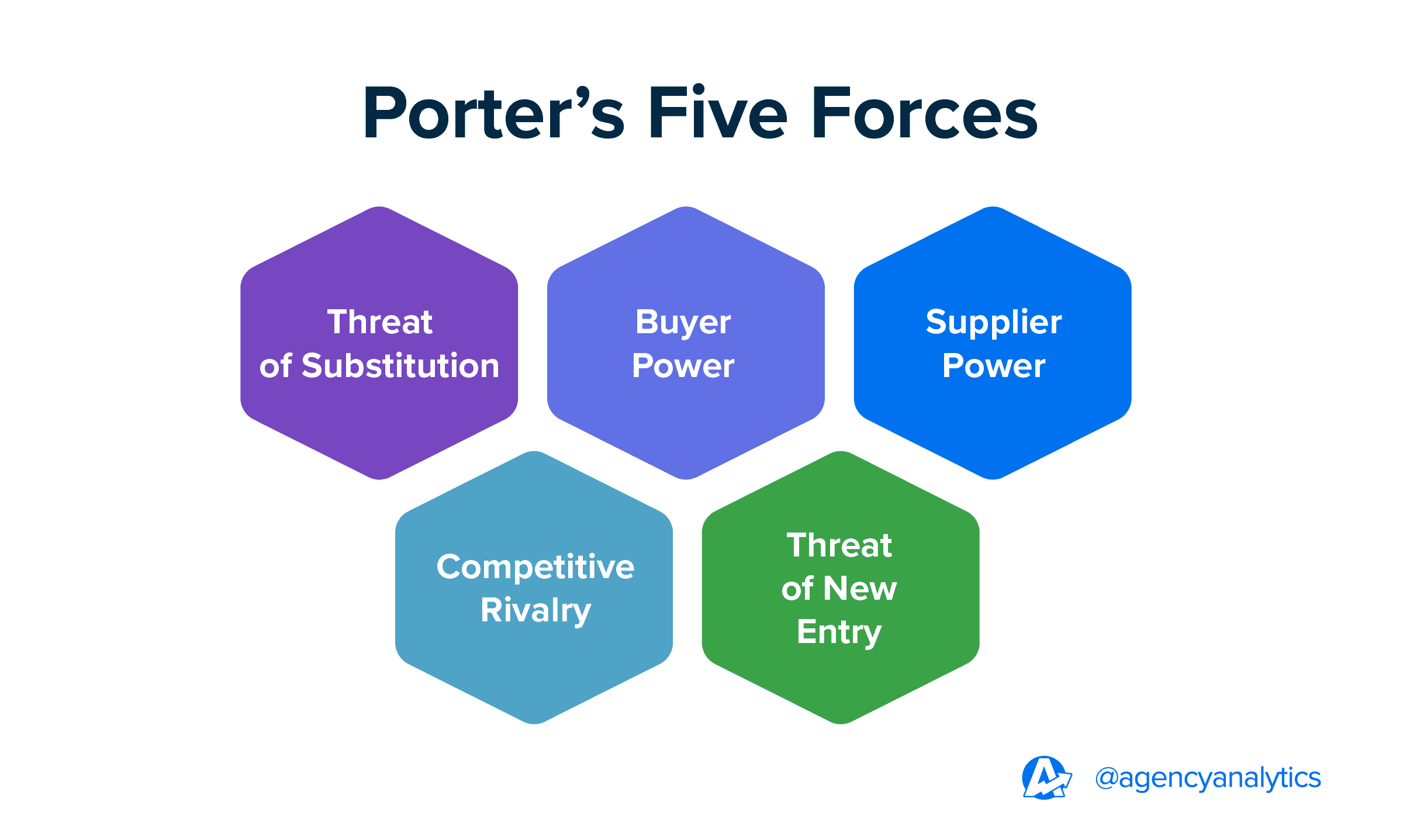
While more academic, Porter’s Five Forces gives agencies a high-level view of market dynamics. It examines competitive rivalry, the threat of new entrants, the bargaining power of suppliers, the bargaining power of customers, and the threat of substitute products.
It’s useful when working with clients in saturated or highly commoditized markets. If a client’s value proposition sounds just like everyone else’s, Porter’s model helps uncover where differentiation is possible and necessary.
Benchmarking
Benchmarking compares your client’s performance against competitors or industry averages. This framework shines when you have access to solid data—whether through public sources, tools like Semrush or Ahrefs, or features like AgencyAnalytics Benchmarks.
For example, if industry CTR averages 3% and your client is hitting 1.5%, you have a clear area for improvement and a compelling story to bring to the next strategy call.

Easily uncover important insights from your client’s marketing data with the Insights feature from AgencyAnalytics. Identify performance results worth celebrating and monitor notable challenges. Get started with your 14-day free trial.
5 Steps To Conduct an Effective Competitive Analysis
We’ve covered what competitive analysis is, why it’s important for agencies, plus a few frameworks to build structure around it. Now, it’s time to get into the nitty-gritty.
A strong competitive analysis follows a clear process. Whether you're evaluating one specific campaign or building a full-funnel strategy, we’re sharing the necessary steps to help you extract insights that matter.
Step 1: Identifying Competitors
Start by defining who you’re analyzing. Reminder: This isn’t always who your client thinks their competitors are. It’s who’s ranking, advertising, and getting visibility in the same channels.
Often the client has perceived their competition based on their offline operations and industry experience. But, often they get surprised when they see some completely different competitors on digital platforms. It is definitely very insightful and helps them to understand their competition in 360 degrees.
Pranav Patil, Senior Paid Ads and Measurement Specialist, Ollo Metrics
Break it into three categories:
Direct Competitors: Agencies or brands offering the same service to the same audience.
Indirect Competitors: Different services solving the same problem.
Aspirational Competitors: Larger players whose strategies set the tone for the space.
Competitor analysis tools like Semrush, Ahrefs, and Google Search Console help uncover who’s showing up for key terms. AgencyAnalytics integrations also help map competitor visibility across multiple channels in a single platform.
Step 2: Gathering Data on Competitors
Once you’ve identified the competition, dig into their performance. This is where competitive analysis tools and dashboards come in.
Look at:
Website structure and content strategy
Keyword rankings and backlink profiles
Paid ad placements and creatives
Social media engagement rates
Email capture tactics and lead gen flows
Use tools like SimilarWeb for traffic estimates, Ahrefs for SEO data, and other popular marketing platforms for PPC, social performance, and more. Compare marketing data from all of these platforms in a single view in AgencyAnalytics. It will save you tons of time jumping from platform to platform or making spreadsheets to compile the data.
We really appreciate the many many integrations that AgencyAnalytics has. It's so easy to pull all of our clients’ data into one place.
Brandan Chard, President, The Modern Firm
Step 3: Analyzing Competitive Strengths and Weaknesses
Once you’ve collected the data, it’s time to separate signal from noise. This step is about translating competitor actions into strategic insights. This isn’t about just listing what they’re doing. You’re figuring out what they’re doing well, where they’re vulnerable, and how that impacts your client’s strategy.
It helps to identify who your actual competitors are and what keywords they are targeting. It also helps to find your "blue ocean" in terms of untapped keywords, and strategies that you could explore to your advantage.
Brian Ferritto, Digital Marketing Strategist, 42Connect
Start by asking:
Where are they consistently outperforming?
What gaps exist in their messaging or targeting?
Are they leaning too heavily on one channel?
How does their user experience compare?
Use a simple framework like SWOT or a customized scorecard to assess each area: SEO, paid media, UX, content, email, social, and conversion paths. This helps organize findings in a way that’s actionable for your team and easy to communicate to clients.
For example, if a top competitor has strong organic rankings but a weak content experience (ex: thin blog posts, no lead magnets), your agency has a clear opportunity to build richer, conversion-focused assets that outrank and outperform over time.
Conducting PPC competitor analysis? Or maybe you’re looking for an SEO competitor analysis checklist? We’ve got you covered.
Step 4: Funnel Hacking
Funnel hacking is the process of mapping out and analyzing a competitor’s customer journey from awareness to conversion. The process reveals how competitors guide prospects from first touch to conversion, giving your agency the insight to build a more effective journey for your clients.
Start by picking a competitor and going through their funnel like a real lead. Click on their ads. Sign up for their email list. Book a demo if that’s part of the flow. Along the way, pay attention to:
Ad creative and messaging
Landing page copy and layout
Email sequences and timing
CTA placement and clarity
Offers, urgency tactics, and follow-up
You’ll often spot friction points or missed opportunities like slow-loading pages, generic messaging, or weak follow-ups. On the flip side, you might see smart plays worth adapting: quiz funnels, personalized product recommendations, or strong re-engagement flows.
Tools like BuiltWith, Wappalyzer, or even Loom can help document and break down the entire journey for internal analysis or client presentations.
Agency Tip: Check out this marketing agency guide to lead magnets to start creating high-converting offers for your clients.
Step 5: Implementing Findings Into Your Strategy
Competitive analysis only creates value when it leads to action. Once you’ve gathered and analyzed the data, bring it back to the client strategy and ask: What changes are worth making right now?
Here’s how to put insights to work:
Prioritize Quick Wins: Did you find a competitor that’s outranking your client with thin content? Refresh your page with deeper insights and stronger CTAs.
Refine Positioning: If everyone else is promising “affordable” or “all-in-one,” lean into what truly sets your client apart.
Adjust Budget Allocation. If competitors are flooding one channel, it might be time to double down elsewhere or outbid them if the ROI is clear.
Build Smarter Reports. Use AgencyAnalytics’ Insights feature and incorporate as many marketing platforms as your client uses to show exactly how they compare and what progress looks like in context.
Agency Tip: Need to ask a client to increase their PPC budget? This blog article outlines how to approach the conversation.
Make the competitive insights visible across your agency—strategy decks, reporting dashboards, campaign briefs, etc. This keeps the team aligned and ensures your client's work stays relevant in a moving market.
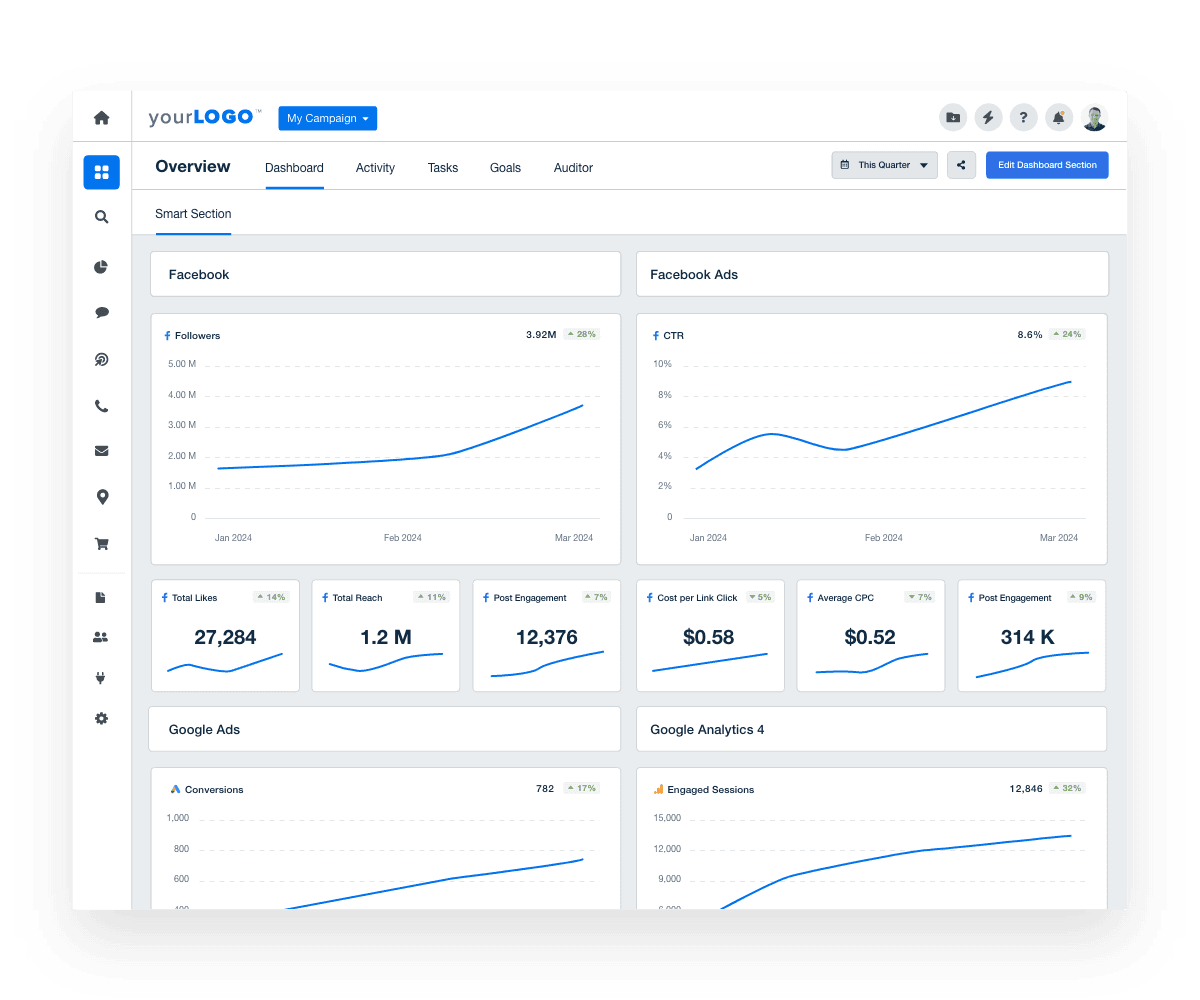
Build marketing dashboards in seconds flat with AgencyAnalytics’ Smart Reports and Dashboards. Simply choose the marketing channel for which you’d like to build a dashboard, and the platform will generate the most popular metrics for you. Try it free for 14 days!
Common Mistakes To Avoid in Competitive Analysis
Even experienced marketers make missteps with competitive analysis. And it rarely has to do with missing some data points. It’s usually about sharing the analysis without enough context.
Here’s how agencies lose momentum and how to stay on track with a comprehensive competitive analysis.
Copying Competitors Instead of Creating a Competitive Advantage
Seeing what others are doing sparks ideas, but turning that into a competitive advantage means taking a different angle–one that fits your client’s strengths and goals. A strategy that copies others will always feel one step behind.
Using Outdated or Incomplete Market Research
The quality of your insights depends on the quality of your data. Relying on screenshots or old reports typically leads to wrong assumptions. Ongoing market research, paired with real-time marketing dashboards from tools like AgencyAnalytics, helps you respond to shifts as they happen.
Agency Tip: Turning on metric Alerts helps you stay on top of any changes in a client’s marketing campaigns. Did a client’s bounce rate increase? Or did their CPC decrease? Address challenges and capitalize on successes immediately, ensuring no opportunity or issue goes unnoticed.

Overlooking Direct and Indirect Competitors
Marketers are busy. They sometimes fall into the trap of focusing only on the usual suspects. However, a competitor analysis looks at both direct and indirect competitors. This means looking from head-to-head rivals to companies solving the same problem with a different offer or approach.
Missing the Link to the Target Market
What works for one brand may not land with your client’s target market. That’s why competitive insights always need to be filtered through the lens of your client’s unique audience, values, and goals.
Become a master at setting agency client goals with tips and tricks from this blog article.
Collecting Data Without Strategy
Data has no value without direction. Use your findings to shape business strategy, refine marketing tactics, and support smarter decisions. Every insight should answer: “What do we need to change—and why now?”
Final Takeaway
Staying competitive in 2025 means making competitor analysis a core part of your agency’s marketing strategy for every client.
When agencies understand their clients’ competitive landscapes, they’re able to make better decisions, allocate resources more effectively, and position clients for long-term growth. Not to mention, showcase their agency’s value.
Monitoring market trends and digging into what competitors are doing (and missing) helps you find opportunities that others overlook. It’s all about outperforming a client’s rival, improving customer satisfaction, uncovering new angles, and making each campaign more intentional.
Use competitor analysis to fuel strategy, not just reporting. It’s all about being proactive, not reactive. With the right tools, a clear process, and a strategic lens, your agency will keep your clients in the lead–exactly where they belong!
Start your competitor analysis today with your free 14-day trial of AgencyAnalytics. Features like metric Alerts, Benchmark Insights, Smart Reports, and more, will make the process feel like a breeze!
FAQs About Competitive Research
Still have questions about competitive research? Don’t worry... We’ve got you covered!
A competitive analysis is the process of evaluating your competitors’ marketing strategies, performance, and positioning. For agencies, it means looking beyond the surface—digging into what’s working for others, where they’re falling short, and how your client can stand out. It helps guide campaign decisions, set realistic goals, and uncover growth opportunities.
The five key parts of a competitive analysis are:
Identifying direct, indirect, and aspirational competitors
Gathering performance data across key marketing channels
Analyzing competitors’ strengths and weaknesses
Funnel hacking to understand customer journeys
Applying insights directly to client strategy and reports
A strong competitive analysis includes detailed research on competitor SEO, paid media, content strategy, social engagement, conversion paths, and positioning. It should also highlight opportunities for differentiation and track how your client stacks up against market benchmarks using tools like AgencyAnalytics.
Agencies can use free or low-cost tools like Google Search Console, SimilarWeb, and Ahrefs’ limited plans. AgencyAnalytics simplifies competitive insights by integrating multiple tools into one dashboard, helping agencies get clear data without wasting time—or budget—on manual research.
Brands should review competitive insights at least quarterly and any time they launch a new campaign or enter a new market. Ongoing analysis helps agencies adapt faster to market changes, identify gaps early, and prove value to clients with real-time data comparisons.

Written by
Richelle Peace is a writer with a degree in Journalism who focuses on web content, blog posts, and social media. She enjoys learning about different topics and sharing that knowledge with others. When she isn’t writing, Richelle spends time teaching yoga, where she combines mindfulness, movement, and her passion for wellness.
Read more posts by Richelle PeaceSee how 7,000+ marketing agencies help clients win
Free 14-day trial. No credit card required.



